New membrane acts as one-way path for charged particles.


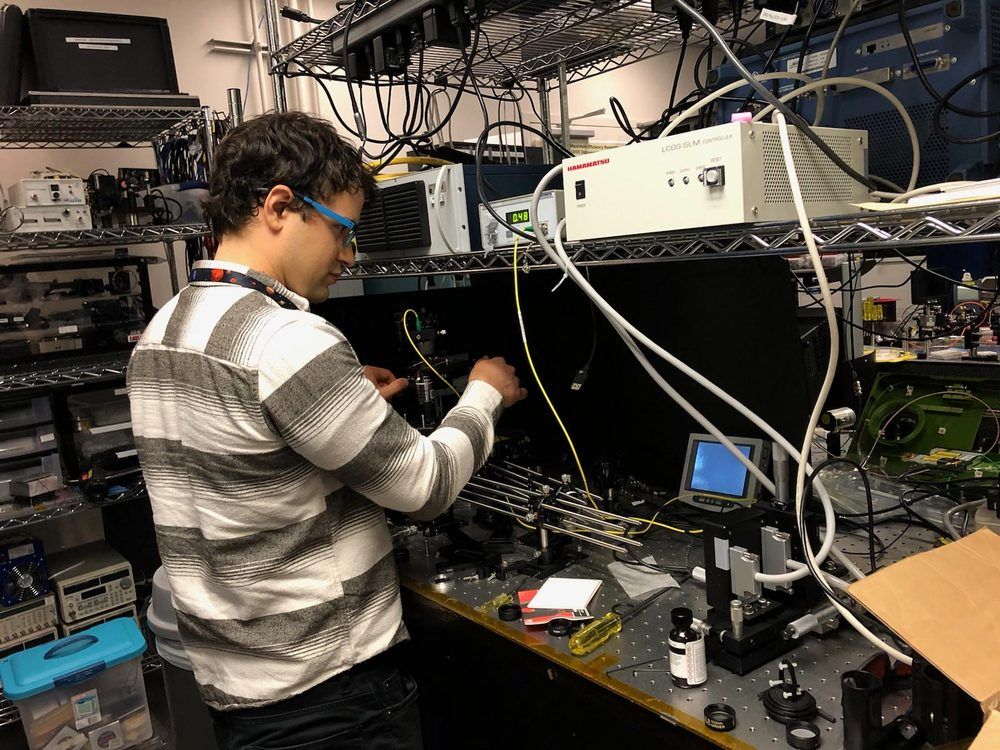
On a metal workbench covered with tools, instruments, cords, and bottles of solution, Aaron Yevick is using laser light to create a force field with which to move particles of matter.
Yevick is an optical engineer who came to NASA’s Goddard Space Flight Center in Greenbelt, Maryland, full-time earlier this year. Despite being in his current position with NASA less than a year, Yevick received funding from the Goddard Fellows Innovation Challenge (GFIC) — a research and development program focused on supporting riskier, less mature technologies — to advance his work.
His goal is to fly the technology aboard the International Space Station, where astronauts could experiment with it in microgravity. Eventually, he believes the technology could help researchers explore other planets, moons, and comets by helping them collect and study samples.
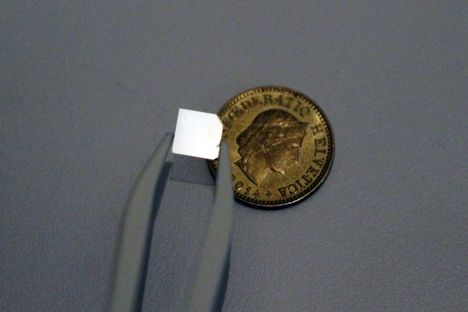
When a guitar string is plucked, it vibrates as any vibrating object would, rising and falling like a wave, as the laws of classical physics predict. But under the laws of quantum mechanics, which describe the way physics works at the atomic scale, vibrations should behave not only as waves, but also as particles. The same guitar string, when observed at a quantum level, should vibrate as individual units of energy known as phonons.
Now scientists at MIT and the Swiss Federal Institute of Technology have for the first time created and observed a single phonon in a common material at room temperature.
Until now, single phonons have only been observed at ultracold temperatures and in precisely engineered, microscopic materials that researchers must probe in a vacuum. In contrast, the team has created and observed single phonons in a piece of diamond sitting in open air at room temperature. The results, the researchers write in a paper published today in Physical Review X, “bring quantum behavior closer to our daily life.”

Scientists at the Large Hadron Collider triumphantly announced the discovery of the Higgs boson back in the summer of 2012. Nicknamed “the God particle,” it was the last new undiscovered particle predicted by the backbone theory of particle physics.
Since then, physicists have found a whole lot of, well, nothing. The Higgs high hasn’t carried through the past decade, and no groundbreaking discoveries have appeared since 2012. New York Times science reporter Dennis Overbye called this silence “ominous.”
But ahead lies a whole frontier of grand unsolved mysteries, including why there’s more matter than antimatter in the universe, what the true identity of dark matter and dark energy is, or how the strange, ultra-weak neutrino particles ended up so ghostly. For many, it’s an exciting time, with lots of new ideas and upcoming experiments to test them.
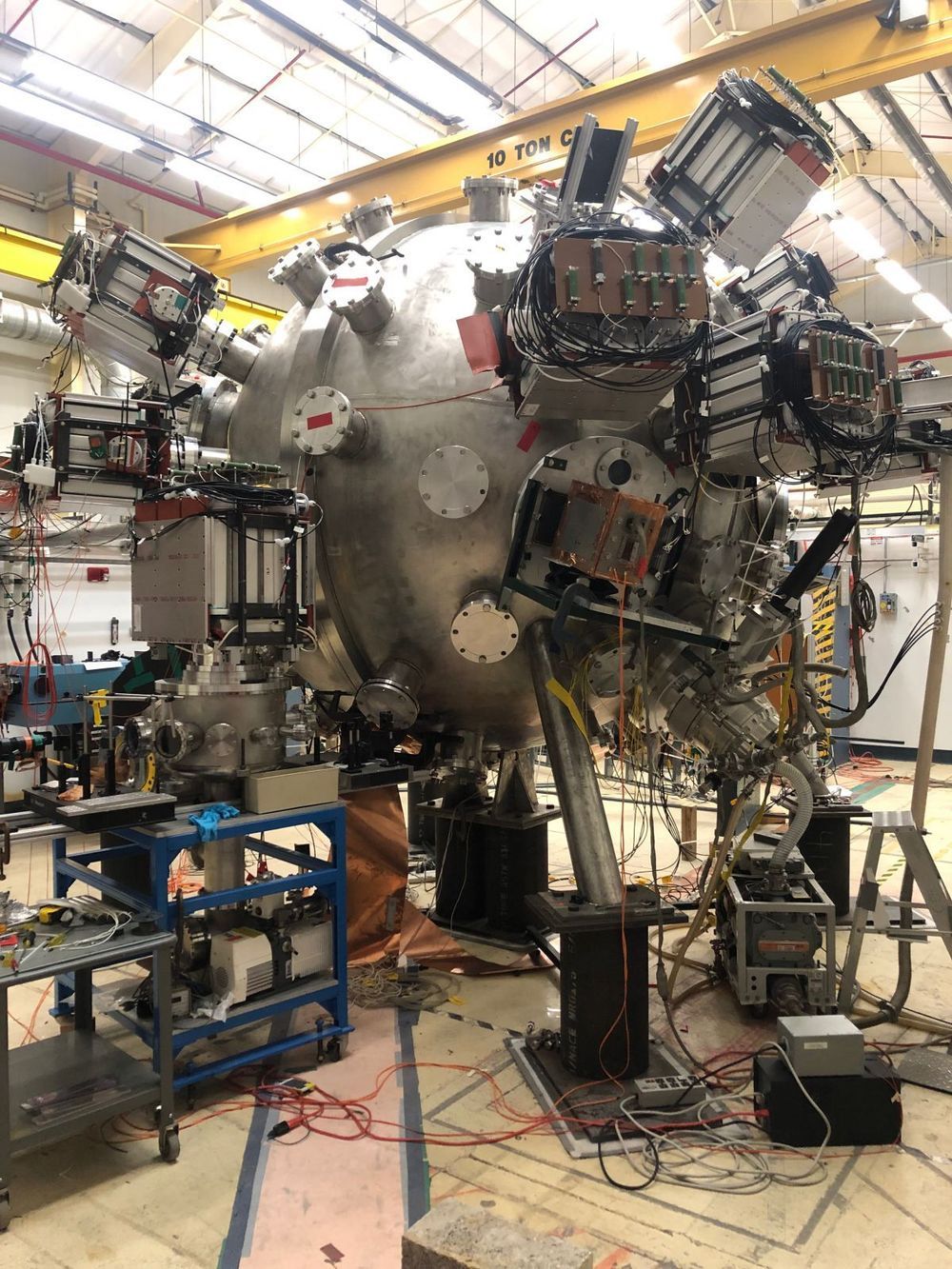
Generating endless energy with zero emissions by just slamming hydrogen atoms together has been somewhat of a pipe dream for decades. Now, scientists may be getting a tiny step closer to feasible fusion power, thanks to a futuristic experiment and dozens of plasma guns.
Eighteen of 36 plasma guns are in place on the machine that could make fusion power a reality. Those guns are the key components of Los Alamos National Laboratory’s Plasma Liner Experiment (PLX), which uses a new approach to the problem. PLX, if it works, will combine two existing methods of slamming single-proton hydrogen atoms together to form two-proton helium atoms. That process generates enormous amounts of energy per speck of fuel, much more than splitting heavy atoms (fission) does. The hope is that the method pioneered in PLX will teach scientists how to create that energy efficiently enough to be worthwhile for real-world use.
The promise of fusion is that it produces tons of energy. Every time two hydrogen atoms merge into helium, a small portion of their matter converts into a whole lot of energy.
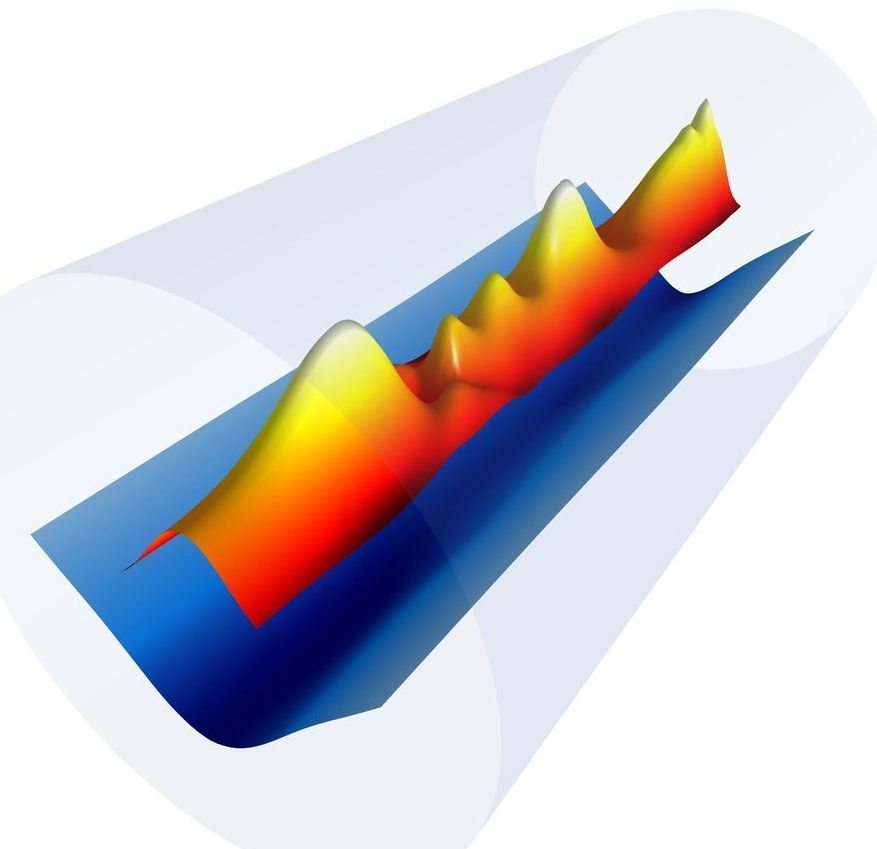
To understand the fundamental nature of our universe, scientists would like to build particle colliders that accelerate electrons and their antimatter counterparts (positrons) to extreme energies (up to tera electron volts, or TeV). With conventional technology, however, this requires a machine that is enormously big and expensive (think 20 miles (32 km) long). To shrink the size and cost of these machines, the acceleration of the particles—how much energy they gain in a given distance—must be increased.
This is where plasma physics could have a dramatic impact: a wave of charged particles—a plasma wave—can provide this acceleration through its electric field. In a laser plasma accelerator, intense laser pulses are used to create a plasma wave with electric fields that can be thousands of times stronger than those attainable in conventional accelerators.
Recently, the team at Berkeley Lab’s BELLA Center doubled the previous world record for energy produced by laser plasma accelerators, generating electron beams with energies up to 7.8 billion electron volts (GeV) in an 8-inch-long plasma (20 cm). This would require about 300 feet (91 m)using conventional technology.

The biggest problem caused by panpsychism is known as the “combination problem”: Precisely how do small particles of consciousness collectively form more complex consciousness? Consciousness may exist in all particles, but that doesn’t answer the question of how these tiny fragments of physical consciousness come together to create the more complex experience of human consciousness.
Any theory that attempts to answer that question, would effectively determine which complex systems—from inanimate objects to plants to ants—count as conscious.
An alternative panpsychist perspective holds that, rather than individual particles holding consciousness and coming together, the universe as a whole is conscious. This, says Goff, isn’t the same as believing the universe is a unified divine being; it’s more like seeing it as a “cosmic mess.” Nevertheless, it does reflect a perspective that the world is a top-down creation, where every individual thing is derived from the universe, rather than a bottom-up version where objects are built from the smallest particles. Goff believes quantum entanglement—the finding that certain particles behave as a single unified system even when they’re separated by such immense distances there can’t be a causal signal between them—suggests the universe functions as a fundamental whole rather than a collection of discrete parts.
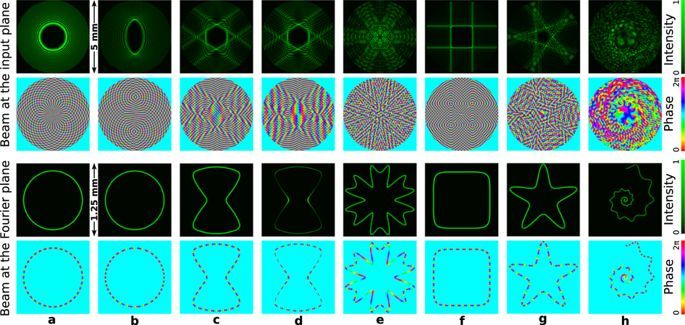
Laser radiation pressure is a basis of numerous applications in science and technology such as atom cooling, particle manipulation, material processing, etc. This light force for the case of scalar beams is proportional to the intensity-weighted wavevector known as optical current. The ability to design the optical current according to the considered application brings new promising perspectives to exploit the radiation pressure. However, this is a challenging problem because it often requires confinement of the optical current within tight light curves (circuits) and adapting its local value for a particular task. Here, we present a formalism to handle this problem including its experimental demonstration. It consists of a Nature-inspired circuit shaping with independent control of the optical current provided by a new kind of beam referred to as polymorphic beam. This finding is highly relevant to diverse optical technologies and can be easily extended to electron and x-ray coherent beams.
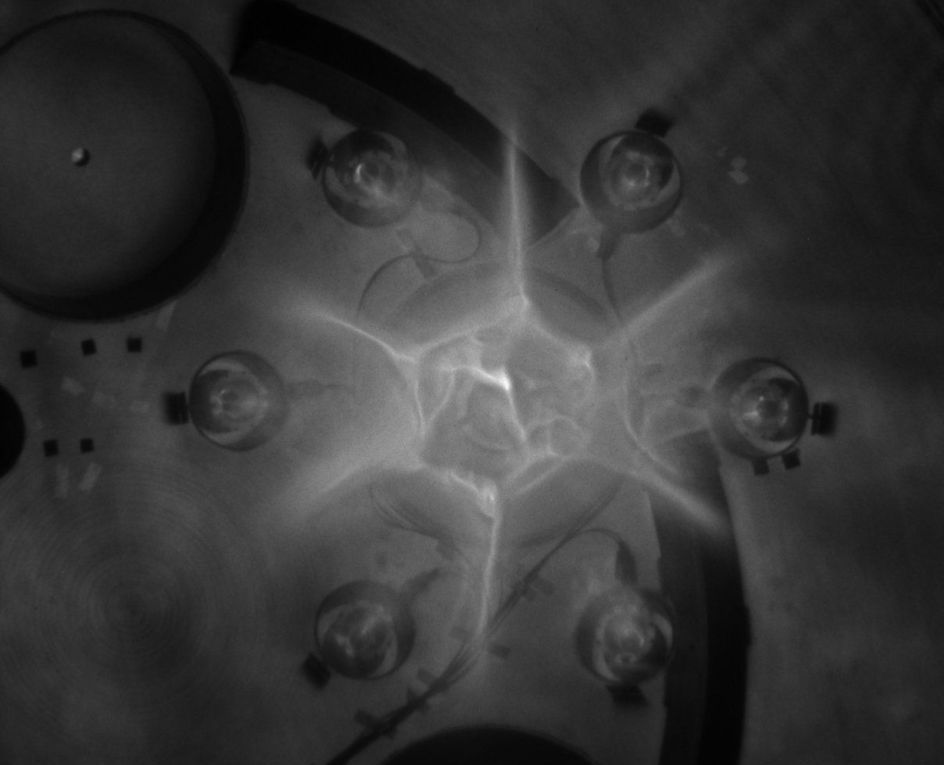
Assembly of the Plasma Liner Experiment (PLX) at Los Alamos National Laboratory is well underway with the installation of 18 of 36 plasma guns in an ambitious approach to achieving controlled nuclear fusion (Figure 1). The plasma guns are mounted on a spherical chamber, and fire supersonic jets of ionized gas inward to compress and heat a central gas target that serves as fusion fuel. In the meantime, experiments performed with the currently installed plasma guns are providing fundamental data to create simulations of colliding plasma jets, which are crucial for understanding and developing other controlled fusion schemes.
Most fusion experiments employ either magnetic confinement, which relies on powerful magnetic fields to contain a fusion plasma, or inertial confinement, which uses heat and compression to create the conditions for fusion.
The PLX machine combines aspects of both magnetic confinement fusion schemes (e.g. tokamaks) and inertial confinement machines like the National Ignition Facility (NIF). The hybrid approach, although less technologically mature than pure magnetic or inertial confinement concepts, may offer a cheaper and less complex fusion reactor development path. Like tokamaks, the fuel plasma is magnetized to help mitigate losses of particles and thermal energy. Like inertial confinement machines, a heavy imploding shell (the plasma liner) rapidly compresses and heats the fuel to achieve fusion conditions. Instead of NIF’s array of high-power lasers driving a solid capsule, PLX relies on supersonic plasma jets fired from plasma guns.

Grab a mixing bowl from your kitchen, throw in a handful of aluminum balls, apply some high voltage, and watch an elegant dance unfold where particles re-arrange themselves into a distinct “crystal” pattern. This curious behavior belongs to the phenomenon known as Wigner crystallization, where particles with the same electrical charge repel one another to form an ordered structure.
Wigner crystallization has been observed in variety of systems, ranging from particulates the size of sand grains suspended in small clouds of electrons and ions (called a dusty plasma) to the dense interiors of planet-sized stars, known as white dwarfs. Professor Alex Bataller of North Carolina State University has recently discovered that Wigner crystallization inside white dwarfs can be studied in the lab using a new class of classical systems, called gravity crystals.
For the curious behavior of Wigner crystallization to occur, there must be a system composed of charged particles that are both free to move about (plasma), that strongly interact with each other (strongly coupled particles), and has the presence of a confining force to keep the plasma particles from repulsively exploding away from each other.